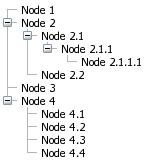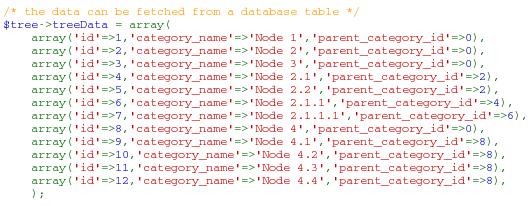Well this may not be new to you all, but still, when I was on the lookout how I could validate an ip address, all the regular expression techniques either failed on valid addresses or bloated too much. The out come was wrote a piece of code which may help others if this is correct, in its way. Not sure, since most of the addresses which I tested against the other validation methods, and failed or non valid ones which passed were blocked here.
Still I am not the ultimate, if you have better suggestions than the code given here, please do so. Continue reading “function is_ipaddress”
Category: Tips
FLV Streaming with PHP
For pseudostreaming I did see some of the projects and suggestions which used a serverside scripting language, to achieve the same as the plugins or modules for the web server software does. Ports in perl, php and python as well as shell was also found, but all were bloated, that they were not transparent. So I thought I would give a try.
Pseudostreaming is a protocol that can be installed on regular HTTP servers such as Apache, Tomcat, IIS or lighthttpd. It uses a server side script for Flash-to-server communication. The player sends a HTTP request to the server with a start time parameter in the request URL’s query string and the server script responds with the video stream so that its start position corresponds to the requested parameter. This start time parameter is usually named simply start. This same technique is used by the ultra-popular YouTube service which uses lighthttpd servers.
Continue reading “FLV Streaming with PHP”
sqlite3; I am falling in love..
After about a decade of php and mysql, with just deviating only in the scripting or language area, today morining, I felt like digging into the sqlite3, which a lot of people are referring to, and some good RIA players are paying attention to also. The big names that sqlite website brags about are Adobe, Symbian and Firefox.
Jumping straight into the hands on, though for a prologe or introduction I will brief the respective situation. Kyle Newton of Galaxy WD, a client of Saturn SPL wanted a website to have the famous USAPostalCodes db, but he wanted the system to use pre imported flatfiles, and with about a couple of hours, we could pre import the USAPostalCodes db to the recommended format, though the whole data size was now 170MB. The pages where being generated on the webserver under 1/100 th of a second. Along with php ob_gzhandler was giving a good output. The client was almost satisfied, though he had some other views and that was not about the technology.
gzip nusoap requests
Recently for a project involving travelport xml api integration, we badly needed the soap requests to be gzipped, since the technical support people suggested. Also we were aware of the benefits of using gzEncoded data when transmitting through the Internet. For the same we checked the wid internet searching with all sort of combinations of gzip nusoap request. Speaking from the inner view, we already had developed a handful of classes to abstract the SubmitXML api provided by Galelio Travelport. And frankly were reluctant to trash all the code already written.
At this point, we swam through the whole code of nusoap.php; should say thanks to easyeclipse, and made some minor tweaks here and there. The following was all that was required, though I doubt if this would be a generic solution, this definitely serves our purpose and the versions we used are 0.7.3/Revision: 1.114.
in class soap_transport_http added property gzipRequests (line 2148)
var $gzipRequests = true; // gzip any requests..
in function buildPayload at the top (line 2799)
if($this->gzipRequests){
$data = gzencode($data);
$this->setHeader("Content-Encoding",'gzip');
}
in function sendRequest (about line 2874), just in case the request is using curl
if($this->gzipRequests){
$data = gzencode($data);
}
Using Foreign Keys in MySQL
On the article at php|architect, Ligaya Turmelle explains you how to handle Foreign Keys in MySQL so they can serve your whims.
No, foreign keys aren’t from Brazil or Italy or even the US. Though they can be a bit strange to those who do not understand them, have no fear. We are here to teach you how to talk to them so they can serve your whims. So what are foreign keys exactly?
Not to put too fine a point on it, they are what make a relational database “relational.†They are the links between tables that keeps everything connected. They are what allows you to put a customer in one table and their order in another and the products they are ordering in a third table so the database has minimal data redundancies.
She continues with the article with a good example. Read it
Building File Uploaders :: Object Method
On DevShed there’s a new tutorial showing how to build file upload functionality into your scripts.
If you’re a PHP developer who has built a certain number of web applications, then it’s quite probable that you’ve already worked with HTTP file uploads. […] First I’m going to teach you how to handle file uploads using a procedural approach, and then, with the topic well underway, by way of the object-oriented paradigm.
The introduce the beginners out there to the $_FILES array (a superglobal) that contains the details about the file(s) that have been submitted. Next comes the construction of a simple form and how to handle the submission on the PHP side.
php wrapper for zapatec tree widget
To quote the zapatec site ” The Zapatec DHTML Tree is an easy, attractive, and versatile way to display information. You can use the DHTML tree as a menu, a site map, or a way to display your data. Our DHTML Tree works in many different browsers, but if visitors use older browsers, they will still be able to see and use the underlying HTML code. ”
I did find this very good, and in the sense that it provides a method for the Search Engines to see all the links. Recently in an administrative backend, I needed to provide a method to browse multilevel deep category subcategory, where they add new products, to their existing line, for which I did choose the lite version of zapatec suite.
The generation of nested ul/li tags for the tree was a real pain for me, from the existing database. And I thought about a wrapper which could do the job if provided with an array of data rows. Hence I made the class-tree.php. The included file is having an implementation sample which will need the lite version from zapatec site.
The sample implementation with the help of zapatec could generate a tree as shown from the code attached below.
from
To start with the implementation, we create an instance of the zptree after including the class-tree.php, and passing the path of zapatec js files.
Then initiate the tree data using $catTree->treeData = array(); Then go along selecting the data from mysql using the select statement select category_id as id,category_name,parent_category_id from category order by parent_category_id, inside a while loop, the tree data is added to the member array, while($rd = $db->fetch_array($rs)) $catTree->treeData[] = $rd;
The attached class-tree.php also has an example implementation at the end, which should be removed before using in production.
Please excuse me about the sloppy documentation, since I am no good at explaining things.
PHP – Quotes or No quotes in associative Array?
Our team was having a debate on why we should put a ‘ (single quote) when referencing arrays in php. Well what is the problem if we use $_SESSION[key], instead of $_SESSION[‘key’].
Well when you think that when encountering non functions or keywords, php tries to evaluate it as a declared constant. So referencing $_SESSION[‘key’] would be better against $_SESSION[key], unless we have defined the constant key and want to use the value of key.
Single Quotes vs Double Quotes!
I recommend using ‘ (single quotes) when programming with PHP; Always use ‘ (single quotes) unless you need the features of ” (double quotes). You might think it’s much easier to write code as:
echo "Today is the $day of $month";
However, using single quotes forces variables to be outside the quotes; instead when you use the ” (double quotes), forces php to evaluate the string, where as with ‘ (single quotes), the string content is taken as such.
error_reporting(E_ALL); make code faster
The single most important thing I tell people who use PHP is to turn error reporting to its maximum level. Why would I want to do this? Generally the error reporting is set at a level that will hide many little things like:
- declaring a variable ahead of time,
- referencing a variable that is not available in that segment of code, or
- using a define that is not set
These factors might not seem like that big a deal — until you develop structured or object oriented programs with functions and classes. Too often, writing code with the error reporting turned up high would cost you hours as you scoured long functions that didn’t work because a variable was misspelled or not accessible.
PHP won’t tell you anything in that case it’ll just create the new variable for you and initialize it to zero. The remedy is to put the following line at the top of every PHP document as you develop:
error_reporting(E_ALL);
It simply forces the error reporting to be at its highest level. Try putting this line in other PHP programs, and more often than not you’ll receive a barrage of warning messages that identify all the potentially wrong elements of the code.
Eventually this when enabled, will force you to write cleaner, structured and fast code.


